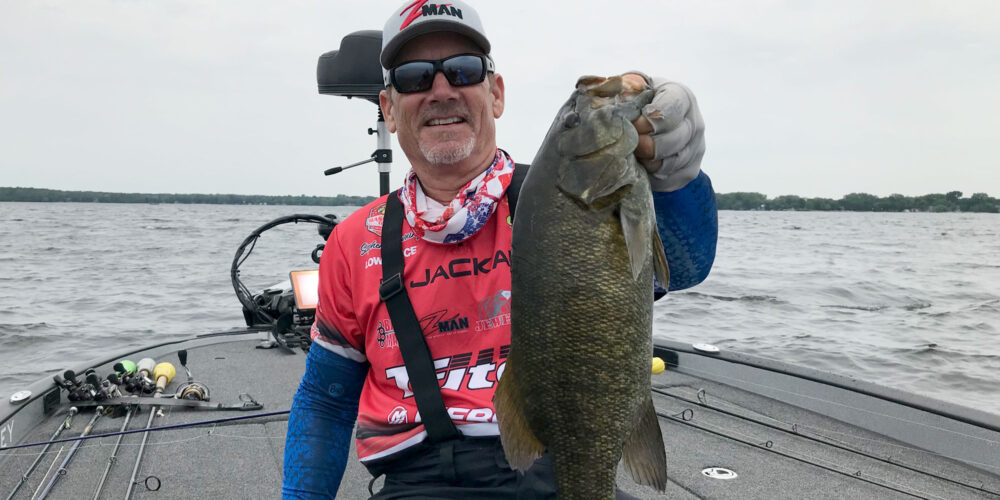STEPHEN BROWNING: Adding Some Offshore Tools to my Arsenal

I’ve been catching bass for a living for more than 25 years, and I have to be honest with you: I don’t feel like I can ever stop learning new and better ways to catch fish. Especially offshore.
Living in Hot Springs, Arkansas, I’m pretty much a largemouth-first guy, with some spotted bass mixed in. There’s just not an lot of offshore-structure fishing that’s conducive to catching an abundance of fish like we recently saw in Sturgeon Bay.
I’m more of a “sight fisherman” so to speak: I like to be looking at whatever I’m casting at. Now, I can hold my own fishing offshore, but I genuinely feel like I need to get a little better about getting off the bank and utilizing my graphs more.
The lakes we go to, depending on what time of year, maybe my strengths are very good. But in times of the year where we go to fisheries that don’t fit those strengths, it just makes sense to start adjusting and making changes to your approach.
It’s not easy, I’ll be the first to admit that.
Over the years I’ve heard about guys that ride around all day looking at their electronics, and they never make a cast. I would literally go crazy doing that, but I realize that I need to start training myself to start looking more instead of casting/fishing.
When I practice, I want to get a few bites. I want to fish, and get a feel for things. Sometimes that works well, and sometimes it doesn’t.
Sturgeon Bay is a good example of that. I did a lot of fishing in practice where maybe I should’ve done more looking, finding bigger groups of fish. I did well in that event, but had I spent more time looking instead of fishing, I might’ve found some of those places where you get a lot of bites versus just a few quality bites.
Doing Some Spoon Work
I know you’ve heard it preached 1,000 times “The difference is time on the water,” and that’s absolutely true. That time helps you build that memory bank up and gives you some real knowledge that you can apply to whatever lake you go to, in any part of the country.
My son recently mentioned to me that he’s had some success fishing a big spoon offshore. It got me thinking about my spoon setup, so I spent some time in my garage working on tackle, and then made a day trip to a lake where I could put in some time with my electronics and a spoon.
When I’m working with spoons, I always go with either a St. Croix Legend X 7-foot-11 heavy moderate-fast or a St. Croix Legend X 7-foot-6 medium-heavy moderate-fast. When choosing my rods, I always consider the line and hook size I’m using, never really the bait. I have a 7-inch spoon on the 7-foot-11 rod, and that’s because I have a 3/0 treble hook on that spoon. I’ll spool some 20-pound Gamma Fluorocarbon on my Lew’s Super Duty Wide 8.0:1 reel for that bait.
On that medium-heavy rod, I’m using that for a 6-inch spoon I have. That spoon has a No. 2 treble hook on it. I’m not overpowering my rods and putting stress on my hooks, so I scaled back my line with 16-pound Gamma Fluorocarbon on that same Lew’s reel.
Those bigger line sizes are going to allow those big spoons to flutter better, giving it more action. I still feel like with the St. Croix rod, Lew’s reel and Gamma line I have, I’ll really be able to drive those big hooks home when I get bit.
This technique would be more geared to a five-fish-limit format versus our every-scorable-bass format if you’re fishing a tournament, but it’s also just a good way to get bigger fish to bite if you’re out fishing for fun.
I’m not going to tell you that I knocked ’em dead on my “research” trip, but I did catch some fish on that spoon and put a thing or two in my memory bank that might help me down the road.